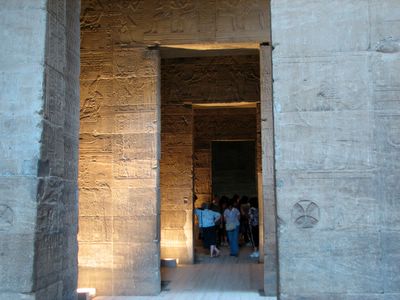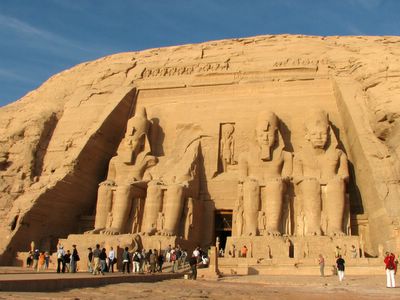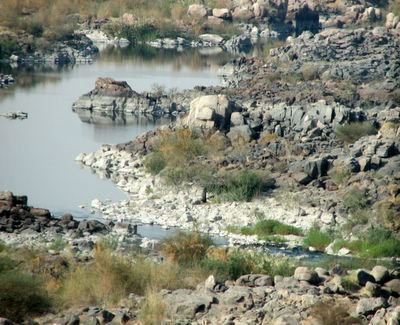
Philae Temple, Aswan, Egypt. Once a great religoius center, was dedicated to the cult of the goddess Isis, and it's sanctuaries belong mainly to the Ptolemaic and Roman periods, roughly between the 4th century B.C. and the beginning of the 4th century A.D.
It was the completion of the first Aswan Dam in 1902 that created a lake and flooded the island and its monuments for part of the year. But the building of the High Dam in 1960 created more serious problems. Finally, it was decided to build a cofferdam around the island and to pump out the water so that nearly all the monuments could be dismanteled and transferred to nearby Agilkia. This work began in 1972 and finished in 1980 through the cooperation of UNESCO and the Egyptian Antiquities Organization.

Relief carvning in Philae Temple, Aswan, Egypt.

Relief carvings of hieroglyphic inscription on the wall of Philae Temple, Aswan, Egypt.

Philae Temple.

Philae Temple, Aswan.

Aswan Souk (market): spices and music. Egypt.

Sunrise over the western desert. We left Aswan at 3:30 AM to go to Abul Simbel that morning.

Abu Simbel, Temples of Rameses the Great (c.1279-1213 BCE). Egypt.

Rameses the Great, Abu Simbel, Egypt.

Old Cataract Hotel, Aswan. This is where Agatha Christie wrote her famous Death on the Nile.

Unfinished Obelisk in Aswan. This obelish was never finished because there is a crack in the stone.

The "first cataract" of Aswan. This is the natural boundary of ancient Egypt in the south, because it was difficult to sail pass the cataract (Egypt depends on the river Nile). North from here, Nile is one smooth river. South of Aswan was Nubian.

No comments:
Post a Comment